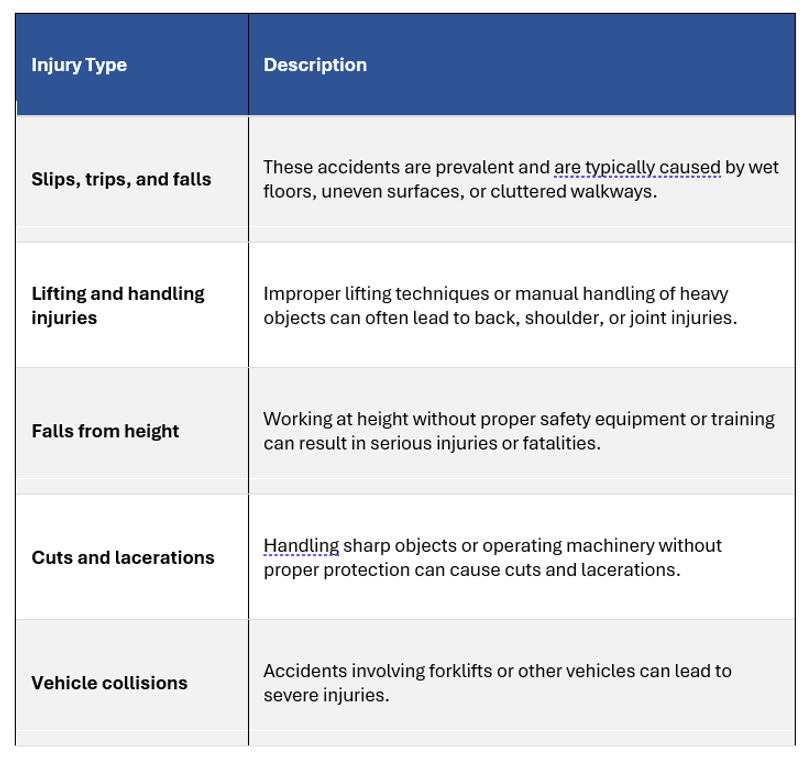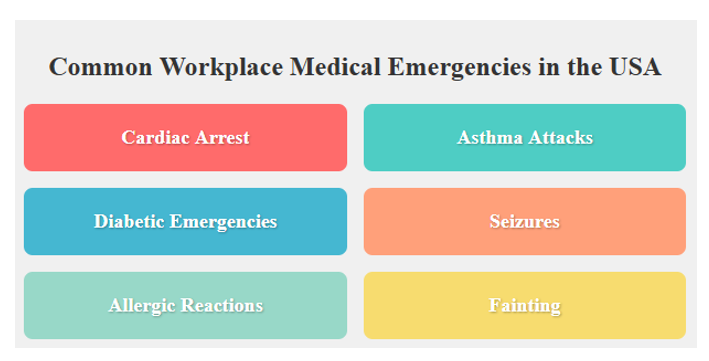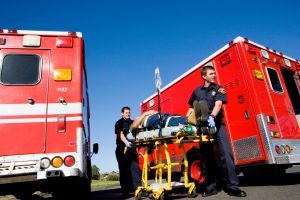As a medical equipment specialist, I’ve seen firsthand how a well-prepared workplace response plan can make the difference between life and death in an emergency. If you are looking to ensure your team is ready for anything, this guide will provide you with all the necessary insights.
It will cover all the essential components of an effective emergency response plan, including identifying common workplace injuries and emergencies, understanding why a solid plan is crucial, highlighting the key elements needed for every emergency response strategy, and detailing the pitfalls to avoid when crafting your plan. By the end, you’ll have the basic information required to begin creating a robust emergency response that could save lives and protect your business.
Identifying common workplace injuries and risks
Understanding the most prevalent workplace injuries and risks is essential to developing an effective emergency response plan. Some of the most common workplace injuries include:

In addition to the workplace injuries above, other risks need to be covered in any emergency plan; one of the most common and dangerous is the risk of sudden cardiac arrest. There are around 10,000 victims of sudden cardiac arrest per year at work in the United States, so every workplace should have access to an AED (Automated External Defibrillator), and staff need to be trained on how and when to use an AED.
Other common medical emergencies that need to be considered in any emergency response plan include asthma attacks, diabetic hypoglycemia and hyperglycemia, seizures, allergic reactions/anaphylaxis, and fainting.

Understanding the importance of an effective emergency response plan
Emergency response plans are vital for workplace safety and business continuity. Here’s why they matter so much:
Protecting lives and reducing injuries
While business continuity is important, the top priority of any emergency plan is keeping people safe. Without proper emergency procedures, companies can be slow to react to dangerous situations, fail to evacuate buildings efficiently, have poor first aid and medical assistance response, and fail to account for all employees. OSHA reports that workplace emergencies cause about 5,000 deaths and 3 million injuries each year in the U.S. alone. A solid emergency response plan can dramatically reduce deaths and injuries.
Minimizing chaos
When disaster strikes, people often panic. But a well-crafted emergency plan:
- Provides clear instructions to follow.
- Assigns specific roles and responsibilities.
- Establishes clear communication protocols.
Protecting company assets
While human safety is always the top priority, emergency plans can also help safeguard:
- Company infrastructure, data and equipment.
- Inventory and supplies.
According to FEMA, 40% of businesses never reopen after a disaster and another 25% fail within a year. However, proper planning offers vital protection for business survival.
Meeting legal requirements
Many countries legally require companies to have workplace emergency plans. In the U.S., the Occupational Safety and Health Administration (OSHA) mandates written plans for all businesses with over 10 employees.
Key components: The pillars of a rock-solid emergency plan
An effective emergency plan will differ for every business, but a few common steps should be followed:
- Begin by identifying weak links and consider what could go wrong during emergencies such as fire, accidents, extreme weather like floods or snow, and medical emergencies.
- Set up clear internal and external communication channels.
- Effective team communication is crucial to ensure all members are informed and can act quickly in response to evolving situations.
- Make sure everyone knows exactly what to do in an emergency with well-defined roles outlining who’s in charge and their responsibilities.
- Ensure all necessary emergency equipment is easily accessible. This includes ensuring everyone knows where to find the equipment and how to use it safely.
- Don’t wait for an actual disaster to test your emergency plan. Run regular drills and review your emergency plan with any workplace changes or as new potential threats emerge.
- Finally, plan for recovery once the immediate danger has passed. This might include damage assessment, contacting insurance providers, and communicating with customers to keep them informed.
Common mistakes to avoid in emergency planning
Planning for emergency responses is critical for any organization. However, many fail in the execution due to some common pitfalls. The most common problems with emergency planning involve the lack of regular drills and ongoing training, poor communication, and lack of detail.
Organizations should schedule regular drills and training to avoid these pitfalls, communicate emergency plans clearly, and ensure the plan is sufficiently detailed to cover all eventualities. Keeping the emergency plan current and relevant, along with regular practice and training, will create a culture of preparedness that could save lives if disaster strikes.
Conclusion: Ensuring safety and preparedness in the workplace
Nobody likes to think about worst-case scenarios, but a solid emergency response plan is a must-have for any workplace that values its people and its business. The time to create an emergency response plan is right now. Emergencies and disasters don’t schedule appointments; they just happen. A practiced emergency plan is a safety net that can save lives should the worst happen. But even the best plans will be rendered useless without continuous ongoing practice and training.
Effective emergency response planning is essential to protect employees, minimize equipment, stock, and infrastructure damage, and ensure business continuity. Identifying workplace risks and incorporating key strategies to minimize or eliminate these risks can significantly enhance workplace safety and preparedness.
Steven John Cumper, B.App.Sc. (Osteo.), M.Ost., is a businessman with a strong background in biomedical science and osteopathic medicine. He founded Medshop & ScrubsIQ while studying at RMIT University in Australia, expanding its reach to markets in Papua New Guinea, Singapore, and Malaysia. In September 2021, the Bunzl Group acquired a majority stake in Medshop, but Cumper remains involved as the Managing Director (Medshop Group).

